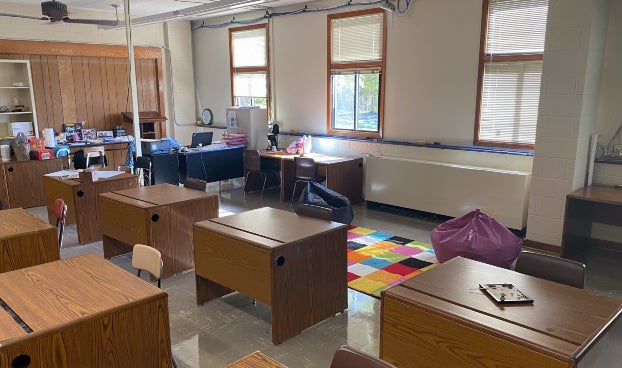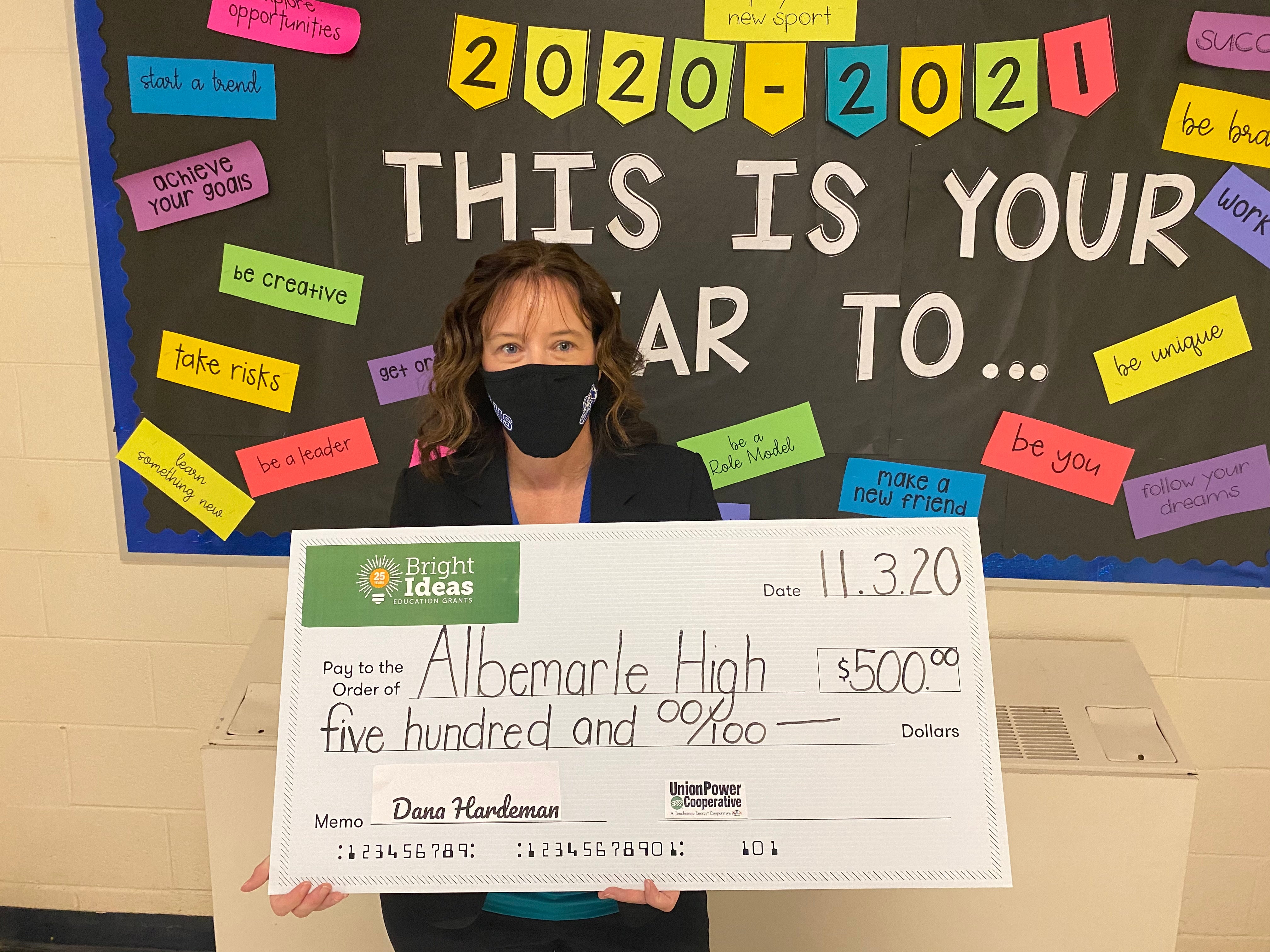Instructor creates safe haven room for struggling students at Albemarle High
Published 3:13 pm Tuesday, January 5, 2021

- The safe haven room at Albemarle High School is a place where students can go to unwind and relax.
|
Getting your Trinity Audio player ready...
|
While the coronavirus pandemic has impacted everyone across the country to some degree, it’s been especially different for students.
To help alleviate the student stress at Albemarle High School, one instructor has set about creating a safe haven room where students who need time to themselves can come to relax and unwind.
Veteran teacher Dana Hardeman, who has taught for almost 20 years in Virginia and North Carolina, was hired last January as a result of a $3.7 million, five-year grant from the Department of Education that was awarded last year to Stanly County Schools, in a partnership with Montgomery County Schools.
Funds for the RESTORE grant, which created a multi-tiered system of support focusing on student behavior, academics and social-emotional learning, have gone to five high-needs schools in each county. Hardeman, who’s from Norwood and graduated from South Stanly High School, works with Albemarle High, Albemarle Middle, Stanly Academy Learning Center, East Albemarle Elementary and Central Elementary. She helps to train teachers on how to best support their students.
Though her title may appear daunting, technically she is the MTSS/PBIS differentiation coordinator, her role is essentially to make sure each student is properly supported and cared for, in whatever capacity that may take.
“It’s how do we support students and it’s all students,” she said. “It’s anybody that shows that they have a need. We use that time to determine what we want to do, intervention-wise.”
About the safe haven room
While in the past, most traditional interventions, such as sending students to the principal or guidance counselor or suspending them, often focused on students struggling with behavioral or academic issues, Hardeman says students also struggle with social and emotional issues, which have likely been exacerbated due to the pandemic.
The safe haven room was created as an alternative option for students who might be reticent to speak with the principal or guidance counselor.
“You know, we thought if it was in-between, it wasn’t a guidance room and it wasn’t the office, that they might open up,” Hardeman said.
She got the idea of creating a safe haven room based on her experiences dealing with students as a high school teacher and from similar concepts already established in many elementary schools. As a teacher, she said students always felt comfortable coming to talk to her about the issues in their life. Even when her own students were suspended, she would often meet them outside of school, like at a Starbucks, to make sure they didn’t fall behind.
The goal behind the room is to offer an alternative option for teachers to send students if they are having problems aside from a trip to the principal’s office, which often result in disciplinary consequences. Hardeman said that many studies have shown that multiple disciplinary consequences can reduce the chances students will actually graduate.
Unlike traditional in-school suspension or being sent home due to disciplinary problems, which often amounts in huge losses in instructional time, Hardeman says “the goal of the safe haven room is to get them back in class as quick as possible with the support they need.”
Not all students that come to the room do so due to a discipline problem, she said. The safe haven room is also a resource for students who simply need some time to relax and get away from their class for a few minutes.
Though the room is still in its infancy, Emily Shaw is confident it will be a meaningful resource for students.
“I hope that the room provides a safe place for students where they feel welcome and feel encouraged to share their feelings so that way we can help them with any issues that they may be having so we can get them back on the track to instruction and back with their classmates smiling and having a good time again,” said Shaw, who was principal when the room began.
Shaw added: “I hope it blazes a trail for other high schools to take the same initiative, too, to provide a place for their students.”
‘This is an outlet for students’
Hardeman also received $500 thanks to a Bright Ideas education grant, sponsored by North Carolina’s electric cooperatives. The money allowed her to purchase supplies for the room, which is located on the second floor. The room is equipped with bean bag chairs, a colorful carpet, an interactive miniature zen garden for students to tinker with, adult coloring books, stress balls and mindfulness games.

Dana Hardeman received a $500 Bright Ideas education grant to purchase supplies for her safe haven room at Albemarle High School.
Though the room is a place where students are encouraged to talk with Hardeman about their problems, students are still expected to complete their assignments. Hardeman keeps a detailed log of each student that comes to the room, including their grade level and what assignment they should be working on. To make sure students remain focused on their work, phones are confiscated and placed in a cubby.
To better help Hardeman engage with the students, she has another instructor stationed in the room: Monique Dupree, who’s a student support specialist.
“This is an outlet for students, this is not necessarily about discipline,” Dupree said. “This is where they can come and cry, they can get help, they can get support, they can do work, they can come in the classroom for five minutes and not say anything.”
Part of Hardeman’s job is that of a counselor: she works to earn the students’ trust so they feel comfortable enough to talk with her about the underlying reasons why they were sent to the room.
“We want to make sure that it’s something we can help with,” she said. “If a kid does have a problem sleeping, there might be some underlying thing that we could figure out.”
And even if Hardeman cannot directly help students with their struggles, she can refer them to a trauma counselor or to a relevant program within the community.
“I’ve got probing questions that we can always ask like, ‘Why did you do this? What is going on with this behavior?’ ” she said. “Most students, they’re either trying to get out of something or they’re trying to get away with something.”
Hardeman hopes that eventually the room will become a place where the students will engage with each other in meaningful dialogue as a therapeutic way to discuss the issues affecting them.
“It’s almost like a group therapy session where the kids can talk it out themselves,” she said.




